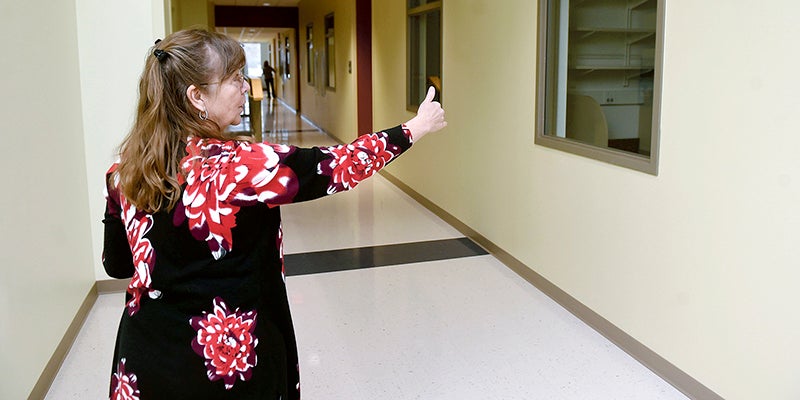Institute dedicated to moving forward despite missing out on bonding dollars
Published 6:30 pm Wednesday, May 22, 2024

- The Hormel Institute’s Dr. Susan Hafenstein points out how the cyro-electron tomography addition will layout at the Institute, part of the proposed Minnesota Bioimaging Center project. Herald file photo
|
Getting your Trinity Audio player ready...
|
Like many groups in Minnesota, The Hormel Institute was a victim of circumstances when state legislators failed to pass a bonding bill for public works projects.
The Institute was asking for around $20 million to go toward its Minnesota Bioimaging Center (MBiC) project. The money would have gone to a phase 1 addition to the existing structure of the Institute as it looks to expand its capabilities, provide essential workforce training and offer statewide STEM education opportunities for students from K-12 up to the graduate level.
However, it will have to take the next steps of that work by looking at other ways to advance that mission in the near future.
“It’s always disappointing, but we understand how politics works. That’s how the system works,” said Institute Executive Director Dr. Robert Clarke. “Sometimes it comes out in your favor and sometimes it comes out against us. We don’t hold anyone responsible. We’re happy we have the support of the many people we did.”
Aside from local legislators Rep. Patricia Mueller and Sen. Gene Dornink, a strong proponent of the MBiC project was Gov. Tim Walz, who reasserted that support during a visit in April.
“When I come to a place like this and see the intersection of local, state and federal and then you see public and private partnerships in building something like the building we’re in … it’s an exciting time,” he told an assembly during that visit. “This idea of what the future of Minnesota looks like — It looks a lot like what you’re doing here.”
However, as the session came closer to the end any measurable work toward a bonding bill was lost leading up to the chaotic finish of the session.
Still, Clarke is optimistic, because the lack of funding for the physical expansion isn’t getting in the way of the project expansion, with a new piece of equipment that will expand the facilities’s capabilities to include tomography (cryoET) slated to be installed late summer, early fall.
The Institute will be the first in the nation to have the technology after it was the seventh in the country in 2016 to obtain a Titan Krios Cryo Electron microscope (cryoEM). In short, the project itself is still moving forward.
“I think at the end of the day it slows us down more than anything else,” Clarke said. “We will have to prioritize what we do, when we do it. We reevaluate. It’s always a work in progress to make sure we do the right things at the right time to make the best of the resources we have.”
To that end, the Institute already has plans to make use of available space already at the institute for the MBiC project. The progression of MBiC will simply take on that new look moving forward as the Institute hunts for ways to find supplemental funding and meet the technology where it leads when it can, Clarke said.
“We don’t ever stop or give up,” Clarke said. “We don’t stop in our research, nor do we stop in pursuit of the resources to do that research.”
Clarke is also optimistic in this progress because he knows that there is staunch support behind what the institute is doing and he’s confident others understand that as well.
“The bonding bill, for us, is a bi-partisan project,” he said. “Cancer doesn’t discriminate. It hits everybody.”
“Support is essential and wonderful and bipartisan and it’s across the board,” Clarke continued. “In many ways, it’s that support that keeps us going in the trenches, really in more ways than one and keeps us going.”





